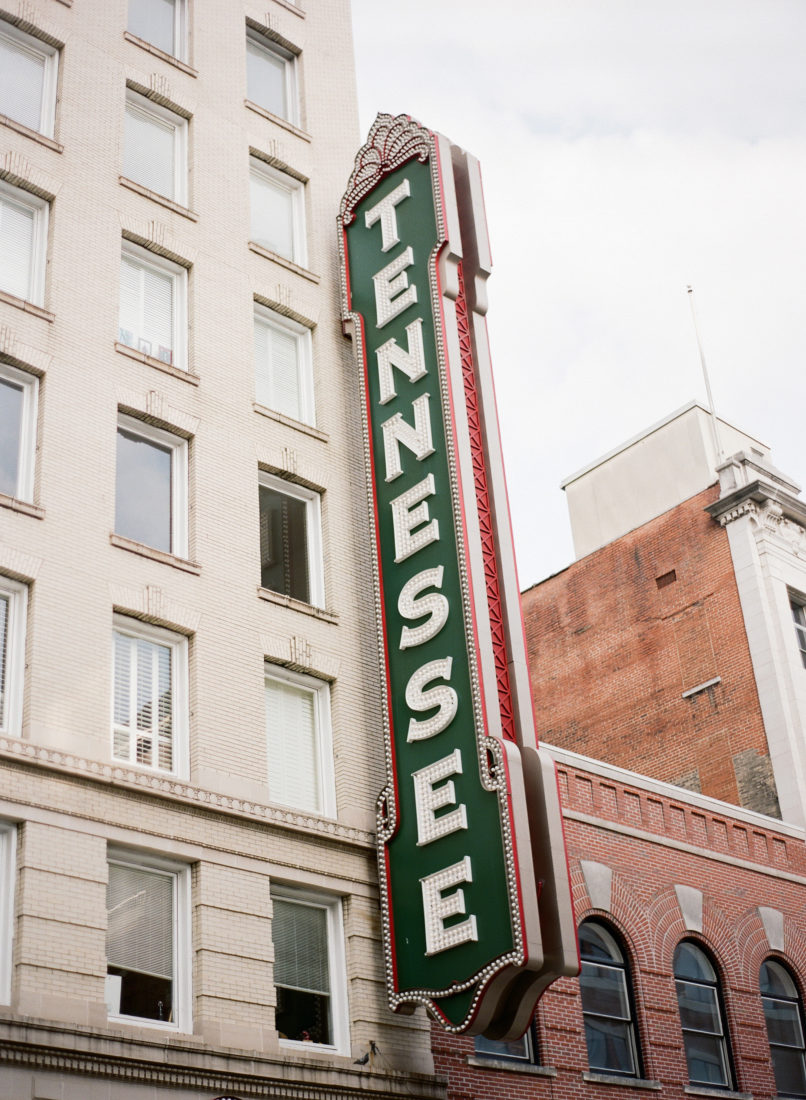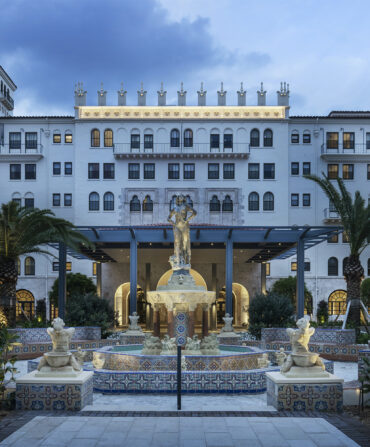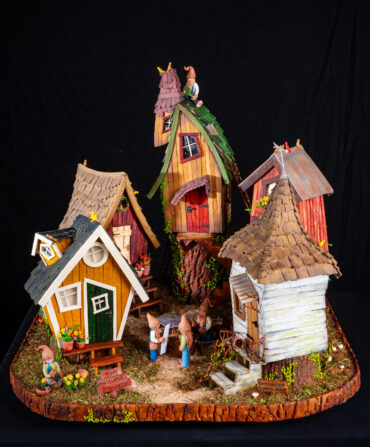Knoxville is a town of poetic understatement. To best appreciate what it has to offer, one cannot visit here with brassy expectations of some sort of hillbilly New Orleans or Appalachian Charleston. Save for the handful of times a year when the University of Tennessee Vols football team takes the home field and the campus morphs into an undulating riot of orange fashion and outsize passion, the city, the third largest in Tennessee, is resolutely unassuming, moderate in climate and political bent. While other places strive, aching to be something definitive, cooler or shinier, something to be “kept weird” or “not messed with,” Knoxville defaults to modesty.
Knoxpatch, it is often called. Or, sometimes, Knox Vegas, muttered with lazy irony. The regional humbleness is a long-standing tic, a well-worn ambivalence captured impeccably by Knoxville-bred writers like James Agee, Nikki Giovanni, RB Morris, and Cormac McCarthy (who described his hometown as “obscure and prismatic,” among other things). A 1952 article in Fortune summed up the operating philosophy of the locals, which has evolved little in the years since: “Almost everyone thinks something should be done, but nobody does anything much. They like it fine the way it is.”
Such practiced diffidence is most likely a consequence of many factors, but none so much as the extraordinary landscape surrounding the city. Plunked face-first into the verdant expanse of the Tennessee Valley, wedged in the generous bosom of the Great Smoky Mountains and the Cumberland Plateau, Knoxville is cursed by association, its own charms unavoidably dwarfed by adjacent natural beauty. (Kind of like the heavyset Judd sister, who, let’s be honest, seems like the only fun one.)
This is not to say Knoxville is ugly. It isn’t. The silvery Tennessee River weaves through town, rolling past industrial warehouses and historic neighborhoods alike, its tributaries throwing light like a Kinkade. There is a reason Knoxville native Quentin Tarantino recently shot his new film here. But unlike other cities of similar size that toss up new buildings like confetti and attempt to brand their very geography, Knoxville marinates in its oft-proclaimed “scruffiness,” never trying too hard, a boots and ponytail kind of place, never kitten heels and an updo. As Steve Earle has written, “Knoxville is where the Old South ends and the rust belt begins.”
This is a good thing. For starters, haven’t we all had enough of people, places, and things pretending to be something they are not? Knoxville is the antidote to all that glitter poisoning. A classic, authentic American city from a forgotten time. Big enough for an Ethiopian restaurant. Small enough that you recognize the vagrants.
As in the old days, here you can live affordably in a vintage bungalow or even a stately Victorian walking distance from downtown, which, positioned a mile from UT, is a miraculous bustle, active and enlivening from morning to late night. The main streets and the center blocks of Market Square—a pedestrian mall established in 1854 that has hosted everyone from Duke Ellington to Booker T. Washington and now draws crowds of ten thousand for free shows and concerts—demonstrate the promise of what can happen when you keep the downtown heart of your city beating. There, a perfect storm of offices, restaurants, residences, retail, parks, and performance spaces nurtures steady foot traffic. Complimentary weekend parking is the cherry on top, making it painless for the curious to check out any of the innumerable civic celebrations such as April’s Dogwood Arts Festival, a multi-week fete of art, music, food, and flowering trees, or Mardi Growl, an animal shelter benefit/excuse to dress your dog like Woofgang Pup, or the International Biscuit Festival, a weeklong ode paying tribute to the white and fluffy. Along with baking contests and a Miss and Mr. Biscuit pageant, Biscuit fest includes a songwriting contest, first won by Kevin Buchmeier’s sly country croon “I’ll Risk It (For Her Biscuits),” which narrowly defeated a biscuit-inspired rock opera. That Knoxville is the sort of place one can live in and write biscuit-inspired rock operas is precisely the point.
We may not have five stellar sushi joints. But we have a really good one, and the waiter remembers your cocktail order. We also have an unpretentious, burgeoning art scene, a handful of buskers, better local radio than New York and L.A. combined, and more homegrown roots music than seems fair. Maybe because Knoxville and its surrounding hills breed musicality. Maybe because Knoxville has nurtured such greats as Dolly Parton, the Everly Brothers, and Bill Scarlett, alongside modern marvels Robinella, the Black Lillies, Christabel and the Jons, the V-Roys, and Marina Orchestra. Maybe because Knoxville is cheap enough for musicians to actually reside here, and once settled in, they rarely leave.
Many play in the Old City, a neighborhood adjacent to downtown known in the early 1900s as the Bowery, or, depending on your affinity for ladies of the whenever you need them, Friendly Town. The very same buildings that once housed cocaine parlors, gambling dens, and an infamous shoot-out between Kid Curry and the police are now refurbished pubs, coffee joints, loft apartments, and hipster bodegas. Even so, the ramshackle, sweetly seedy energy of the past remains. The Old City upgrades are no mallification redevelopment, more of a gentle spruce leaving the original allure intact. It, like the rest of Knoxville, remains Friendly Town.
Which is another good thing. In this age of splintering demographics down to the cellular level, Knoxville persists in being stubbornly inclusive. There is no indie bar and frat bar and AARP bar. There are simply bars, where everyone goes, even the dog. Knoxville is like one big episode of Cheers that way. Stay a week, and everybody knows your name. Stay two, and you’ll be asked to join the band.









